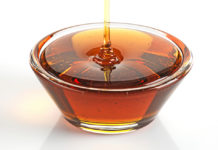
A Comprehensive Guide for Wellness Enthusiasts
In the realm of health and wellness, understanding the intricacies of our body’s functions is paramount. One such area that has garnered significant attention is insulin resistance. At its core, insulin resistance is a condition where the body’s cells become less responsive to the hormone insulin, which is vital for regulating blood sugar levels. This resistance can arise due to a myriad of factors, including genetics, a sedentary lifestyle, poor dietary choices, obesity, and certain medical conditions. Over time, if left unchecked, insulin resistance can pave the way for more severe health issues like type 2 diabetes and heart disease. With its increasing prevalence in today’s society, gaining a deep understanding of its biological mechanisms is essential for anyone passionate about holistic health.
1. Introduction to Insulin Resistance
Insulin, a hormone we often associate with diabetes, plays a pivotal role in maintaining our body’s glucose balance. Think of it as a key that unlocks our cells, allowing glucose to enter and be utilized for energy. However, when our cells start resisting this key, it results in insulin resistance, leading to elevated blood sugar levels and potential health challenges.
2. The Role of Adipose Tissue
Our body fat isn’t merely a storage unit; it actively influences our health. Adipose tissue releases molecules called adipokines, with adiponectin being particularly significant. This molecule enhances our body’s sensitivity to insulin, promoting efficient glucose uptake. However, conditions like obesity can lead to decreased adiponectin levels, contributing to insulin resistance.
3. Inflammation: The Silent Culprit
Chronic inflammation, often unnoticed, is a significant player in insulin resistance. Inflammatory molecules, such as TNF-α, can disrupt the pathways insulin uses to function, leading to increased resistance.
4. The Impact of Lipids
Elevated free fatty acids in our bloodstream, often resulting from diets high in unhealthy fats, can lead to insulin resistance. These fatty acids can be stored in places they shouldn’t be, like our liver or muscles, further complicating the insulin process.
5. Mitochondrial Health
Our cells’ powerhouses, the mitochondria, play a role too. If they aren’t functioning optimally, it can lead to incomplete fat burning, resulting in lipid buildup and, you guessed it, insulin resistance.
6. Stress in the Endoplasmic Reticulum
This cellular structure is responsible for protein synthesis. However, when overwhelmed, it can trigger a response that impairs insulin signaling, contributing to resistance.
7. The Gut Connection
Our gut health is intertwined with our overall wellness. An imbalance in our gut’s microbial environment can lead to increased gut permeability, allowing unwanted compounds into our bloodstream, triggering inflammation and insulin resistance.
8. Embracing Therapeutic Strategies
With a clear understanding of insulin resistance, we can better approach therapeutic strategies. From lifestyle changes like diet and exercise to medications and innovative therapies, there’s hope for those facing this condition.
Conclusion
Insulin resistance is a multifaceted health challenge that intertwines various biological mechanisms. From the active role of adipose tissue to the silent impact of inflammation and the intricate balance of our gut microbiome, each aspect plays a crucial role in the onset and progression of this condition. As we continue to advance in our understanding, it becomes evident that a holistic approach, encompassing lifestyle, diet, and therapeutic interventions, is essential to manage and potentially reverse insulin resistance. By staying informed and proactive, we can pave the way for a healthier future, ensuring that our bodies function optimally in harmony with the delicate balance of insulin regulation.










